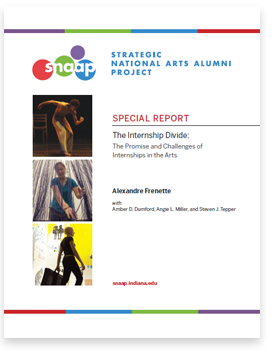"In this report, the Strategic National Alumni Project (SNAAP)—an online survey, data management, and institutional improvement system designed to enhance the impact of arts-school education—brings much-needed nuance to assessing the promise and addressing the challenges of the intern economy. In particular, SNAAP data help participants identify historical trends across cohorts, compare internship practices between various arts majors, analyze how the intern economy might reinforce inequality, assess educational benefits, and contrast career outcomes for paid and unpaid interns. In the context of an intern economy that appears to be rapidly changing, this SNAAP Special Report focuses on the experiences of 10,698 of the most recent undergraduate arts alumni who graduated between 2009 and 2013 and whose experiences reflect current economic realities. Comparisons to older cohorts are also included to help examine trends and provide historical context." [Introduction p. 5-6]
"This SNAAP Special Report focuses on the experiences of 10,698 of the most recent undergraduate arts alumni who graduated between 2009 and 2013 and whose experiences reflect current economic realities. Comparisons to older cohorts are also included to help examine trends and provide historical context." [Introduction p. 6]


Most Commented